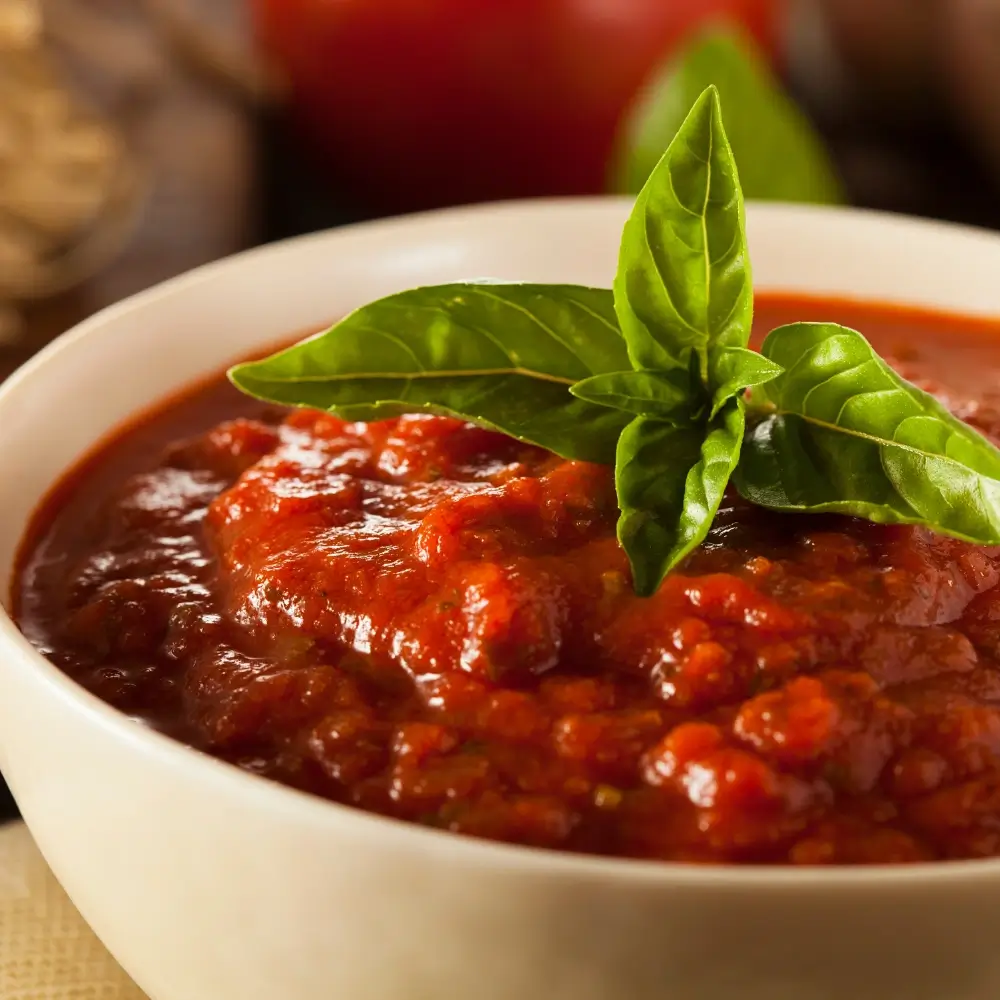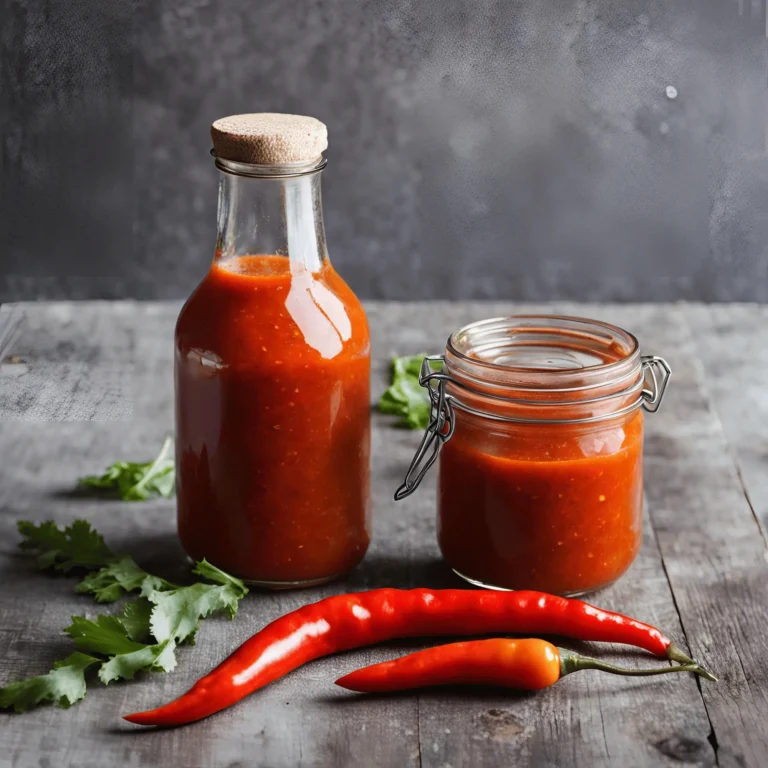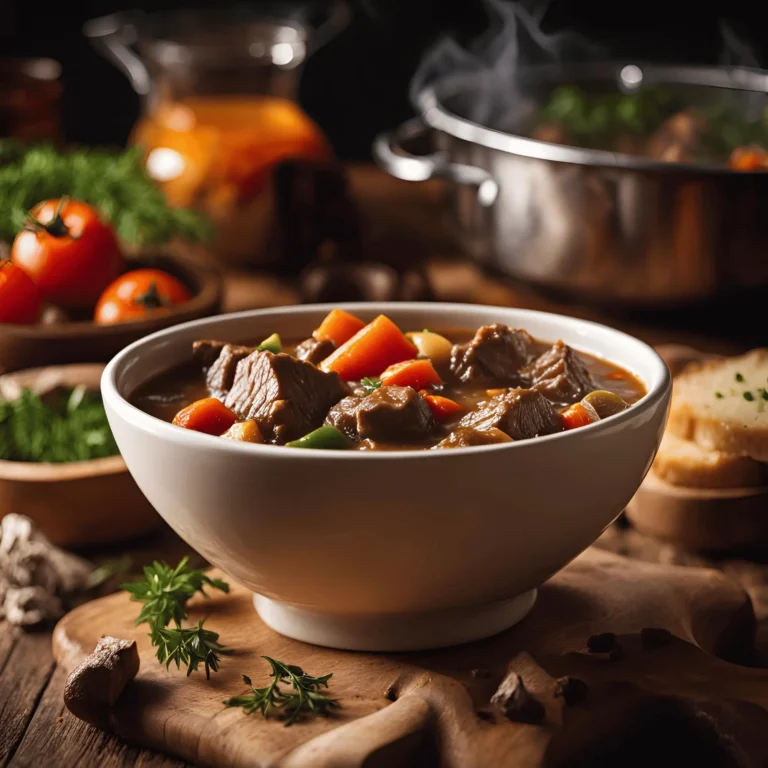Marinara Sauce
What makes a great marinara sauce? Can you really make an authentic Italian taste at home? Making homemade marinara sauce is simpler than you might think. With the right recipe, you can make your pasta dishes even better. A good marinara sauce is key to many Italian dishes, and learning to make it can change your cooking.
With just a few basic ingredients and simple steps, you can make a tasty homemade marinara sauce. This article will guide you through the world of marinara sauce. You’ll learn how to make a delicious sauce, whether you’re an experienced cook or just starting out.
Introduction
Marinara sauce is a key part of Italian cooking. Its rich flavor and versatility make it a favorite for many dishes. By making your own marinara sauce, you can choose the ingredients and control the taste. This ensures your dishes always taste their best.
Key Takeaways
- You can make a delicious and authentic marinara sauce at home with a simple marinara sauce recipe.
- Homemade marinara sauce is easier to make than you think and requires only a few basic ingredients.
- A good marinara sauce is the foundation of many Italian recipes and can elevate your cooking to the next level.
- By making your own marinara sauce, you can control the ingredients, flavor, and quality of the final product.
- With the right marinara sauce recipe, you can create a flavorful and versatile sauce that can be used in many different dishes.
- Making homemade marinara sauce is a great way to experiment with new flavors and ingredients and develop your own unique marinara sauce recipe.
- Homemade marinara sauce can be stored and preserved for later use, making it a convenient and practical option for home cooks.
Table of Contents
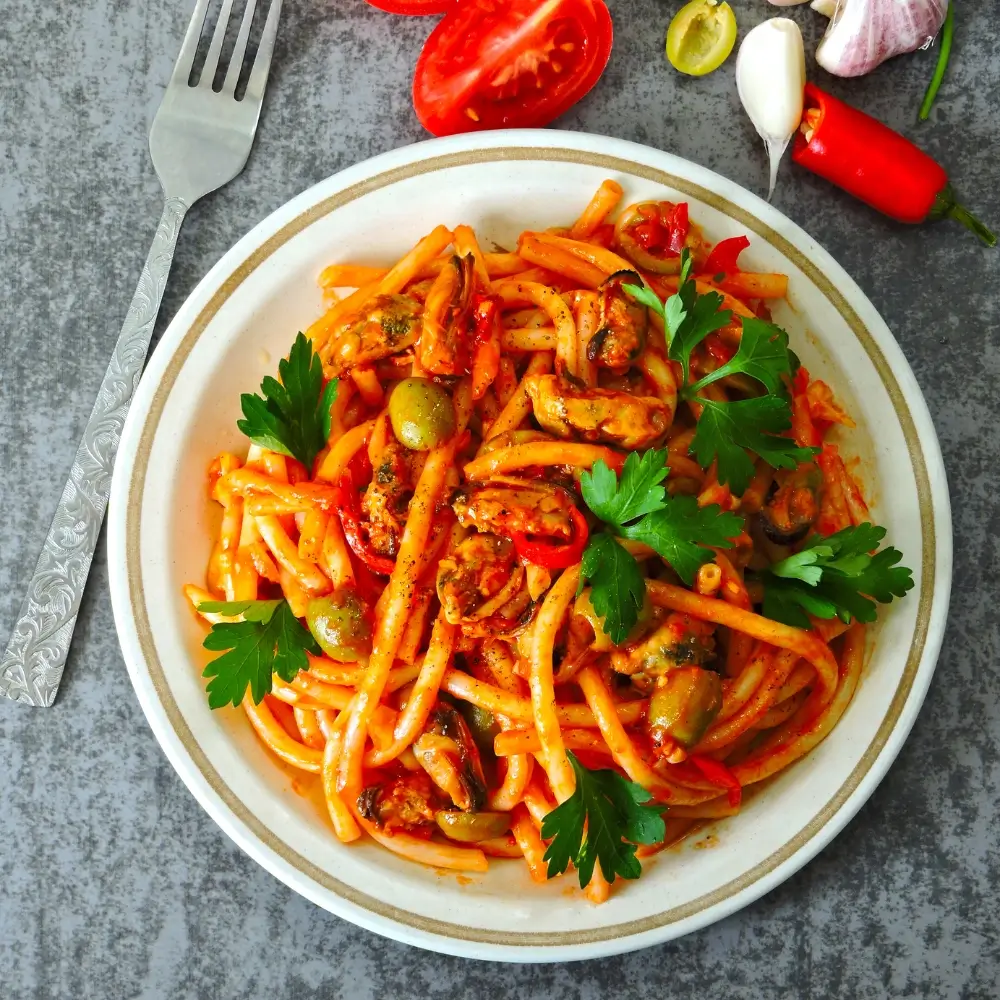
Understanding The Sauce: Origins and Characteristics
Exploring homemade marinara sauce means learning about its origins and traits. This Italian condiment has a deep history. It started in the Campania region, made with San Marzano tomatoes, garlic, and herbs.
Marinara sauce is known for its simplicity and freshness. It doesn’t have meat or dairy, making it a lighter choice. The sauce has different versions across Italy, each with its own twist.
Key Characteristics of Authentic Marinara
To make real marinara sauce, focus on these traits:
- San Marzano tomatoes for a sweeter taste
- Fresh herbs like basil and oregano for depth
- Season lightly to let the flavors of the ingredients shine
Knowing the history and traits of marinara sauce helps you make a great version at home. It’s a skill that can make your Italian dishes stand out. It’s perfect for impressing your loved ones.
Essential Ingredients
To make a tasty marinara sauce, you need a few key ingredients. These include fresh, ripe tomatoes, garlic, olive oil, salt, and herbs like basil and oregano. Using high-quality ingredients is important for the best taste.
Fresh tomatoes are a must for marinara sauce. Plum tomatoes or San Marzano tomatoes work best because of their sweet flavor and low water content. You can also mix in some canned tomatoes for a deeper taste.
Here’s what you’ll need for a simple marinara sauce:
- 2 cups of fresh tomatoes, chopped
- 3 cloves of garlic, minced
- 1/4 cup of olive oil
- 1 teaspoon of salt
- 1/4 teaspoon of black pepper
- 1/4 cup of chopped fresh basil
- 1/4 cup of chopped fresh oregano
With these ingredients and a simple recipe, you can make a delicious homemade tomato sauce. It’s great for pasta, pizza, or as a dipping sauce. The secret to a great marinara sauce is using fresh ingredients and cooking it slowly to enhance the flavors.
| Ingredient | Quantity |
|---|---|
| Fresh Tomatoes | 2 cups |
| Garlic | 3 cloves |
| Olive Oil | 1/4 cup |
| Salt | 1 teaspoon |
| Black Pepper | 1/4 teaspoon |
| Fresh Basil | 1/4 cup |
| Fresh Oregano | 1/4 cup |
Choosing the Right Tomatoes: Fresh vs Canned
Choosing the right tomatoes is key to a great marinara sauce. For a classic taste, San Marzano or Plum tomatoes are top picks. They’re sweet and have less water, making your sauce richer.
You can also use canned tomatoes for your sauce. Look for brands with 100% Italian tomatoes and no added preservatives. Muir Glen and Cento are good choices. Whether you pick fresh or canned, the goal is a sauce that’s tangy and full of flavor.
Best Types of Fresh Tomatoes
- San Marzano: Known for their sweet-tart flavor and low water content
- Plum: Similar to San Marzano, but with a slightly sweeter taste
- Heirloom: Offers a more complex flavor profile, but can be more expensive
Seasonal Considerations
Season matters when picking tomatoes for marinara sauce. Summer is the best time for fresh tomatoes. But, canned tomatoes are great when fresh ones are scarce. Choosing the right tomatoes, fresh or canned, ensures your sauce is delicious all year round.
| Tomato Type | Flavor Profile | Water Content |
|---|---|---|
| San Marzano | Sweet-tart | Low |
| Plum | Slightly sweet | Low |
| Heirloom | Complex | Medium |
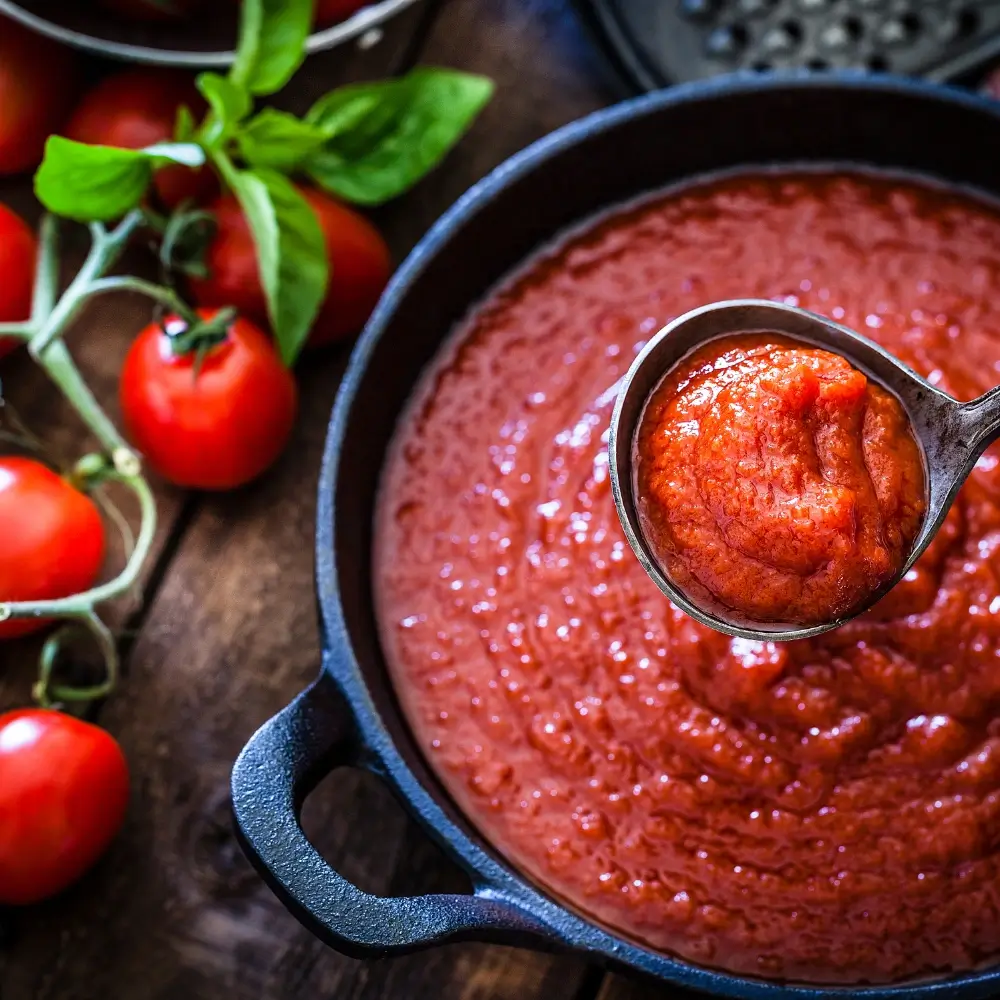
Required Kitchen Equipment and Tools
To make delicious homemade marinara sauce, you’ll need the right kitchen tools. Having these essentials makes the process smooth and efficient. This way, you can focus on creating the perfect flavor for your homemade marinara sauce.
A large pot is essential for cooking the sauce. It ensures even heating and stirring. You’ll also need a blender or food processor to puree the tomatoes for a smooth texture. A colander or strainer is necessary for draining the tomatoes and removing excess liquid. Plus, a wooden spoon or silicone spatula is great for stirring and scraping the sides of the pot.
Other tools you’ll need include a cutting board for chopping onions and garlic, and a knife for precise cutting. You’ll also need a measuring cup for accurate ingredient measurements. A can opener is required if you’re using canned tomatoes. For a more efficient process, consider investing in a garlic press and a herb stripper to prepare your ingredients quickly.
Here’s a summary of the essential equipment and tools you’ll need:
- Large pot
- Blender or food processor
- Colander or strainer
- Wooden spoon or silicone spatula
- Cutting board
- Knife
- Measuring cup
- Can opener
- Garlic press (optional)
- Herb stripper (optional)
With these kitchen equipment and tools, you’ll be well-prepared to create a delicious homemade marinara sauce. It’s perfect for pasta, pizza, or other Italian dishes.
| Equipment/Tool | Description |
|---|---|
| Large Pot | For cooking the homemade marinara sauce |
| Blender or Food Processor | For pureeing the tomatoes |
| Colander or Strainer | For draining excess liquid |
Preparing Your Ingredients
To make a tasty homemade tomato sauce, start by preparing your ingredients well. This step is key to getting the right flavors and textures. You’ll use fresh tomatoes, herbs, garlic, and onions, so handle them carefully.
Before chopping and sautéing, wash your hands and the ingredients. This simple step improves your sauce’s quality. Next, focus on washing and cutting your tomatoes right. You want uniform pieces for even cooking.
Washing and Cutting Techniques
- Wash the tomatoes gently to remove any dirt or bacteria.
- Pat the tomatoes dry with a clean towel to prevent excess moisture.
- Cut the tomatoes into uniform pieces, depending on your desired texture.
Herb Preparation Methods
Herbs like basil and oregano add a lot of flavor to your sauce. Just chop the leaves finely and set them aside. You can also use a food processor for quick chopping.
Garlic and Onion Preparation
Garlic and onions are key in many Italian sauces, including marinara. Peel and chop the onions, then mince the garlic cloves. Sauté them in olive oil to enhance their flavors and aromas.
| Ingredient | Preparation Method |
|---|---|
| Tomatoes | Wash, cut, and chop |
| Herbs | Chop or process |
| Garlic and Onions | Peel, chop, and sauté |
By following these steps, you’re on your way to making a delicious homemade tomato sauce. It’s perfect for pasta, pizza, or other Italian dishes. Take your time and enjoy preparing your ingredients. This will make your final product even better.
Step-by-Step Cooking Process
To make marinara sauce, start by heating olive oil in a large saucepan. Do this over medium heat. Then, add minced garlic and sauté for 1-2 minutes until it smells great.
After that, add canned crushed tomatoes, salt, and your favorite herbs and spices. Stir everything together well. Now, let’s look at the cooking steps:
- Bring the sauce to a simmer and let it cook for 20-30 minutes. Stir it every now and then. This will make the sauce thicker and more flavorful.
- Use an immersion blender to puree the sauce to your liking.
- Taste and adjust the seasoning as needed.
By following these steps, you’ll make a delicious marinara sauce. Remember, the secret to great marinara is using top-notch ingredients. Also, cook it slowly over low heat. This lets the flavors blend perfectly.
As you cook, you can always adjust the seasoning to taste. Don’t be afraid to add your own twist to the recipe. With practice, you’ll become a pro at making marinara sauce. You’ll enjoy it with your favorite dishes.
Seasoning Your Marinara to Perfection
To make a tasty marinara sauce, seasoning is key. You need to balance the flavors to highlight the sauce’s best qualities. Think about the ingredients you use and how they’ll impact the taste.
Essential Herbs and Spices
When making marinara, use basil, oregano, and garlic. These add a deep, aromatic flavor. Don’t forget a pinch of salt and a squeeze of fresh lemon juice for extra taste.
Salt and Acid Balance
Getting the salt and acid balance right is important. Too much salt can overwhelm the other flavors. Too little acid makes the sauce taste dull. Adjust the seasoning to your taste, adding more salt or lemon as needed.
Adjusting Flavors During Cooking
While cooking, you can tweak the flavors. Add more herbs or spices, or a bit of sugar to balance the acidity. Taste the sauce often and adjust to make it perfect.
Common Mistakes to Avoid
When making homemade marinara sauce, it’s easy to make mistakes. These can change the flavor and texture of your sauce. One big mistake is using low-quality ingredients. This can make your sauce taste bland and unappetizing.
Other mistakes include overcooking the sauce, making it thick and bitter. Also, not seasoning it enough can be a problem. To fix these, use fresh, high-quality ingredients. Cook the sauce just right and season it well with salt, herbs, and spices. By avoiding these mistakes, you can make a delicious homemade marinara sauce.
- Using low-quality ingredients
- Overcooking the sauce
- Not seasoning the sauce adequately
By following these tips, you can make a flavorful homemade marinara sauce. It’s great for topping pasta, pizzas, and other Italian dishes. With practice, you’ll make sauce like a pro. Enjoy the taste of fresh, homemade sauce without preservatives or additives.
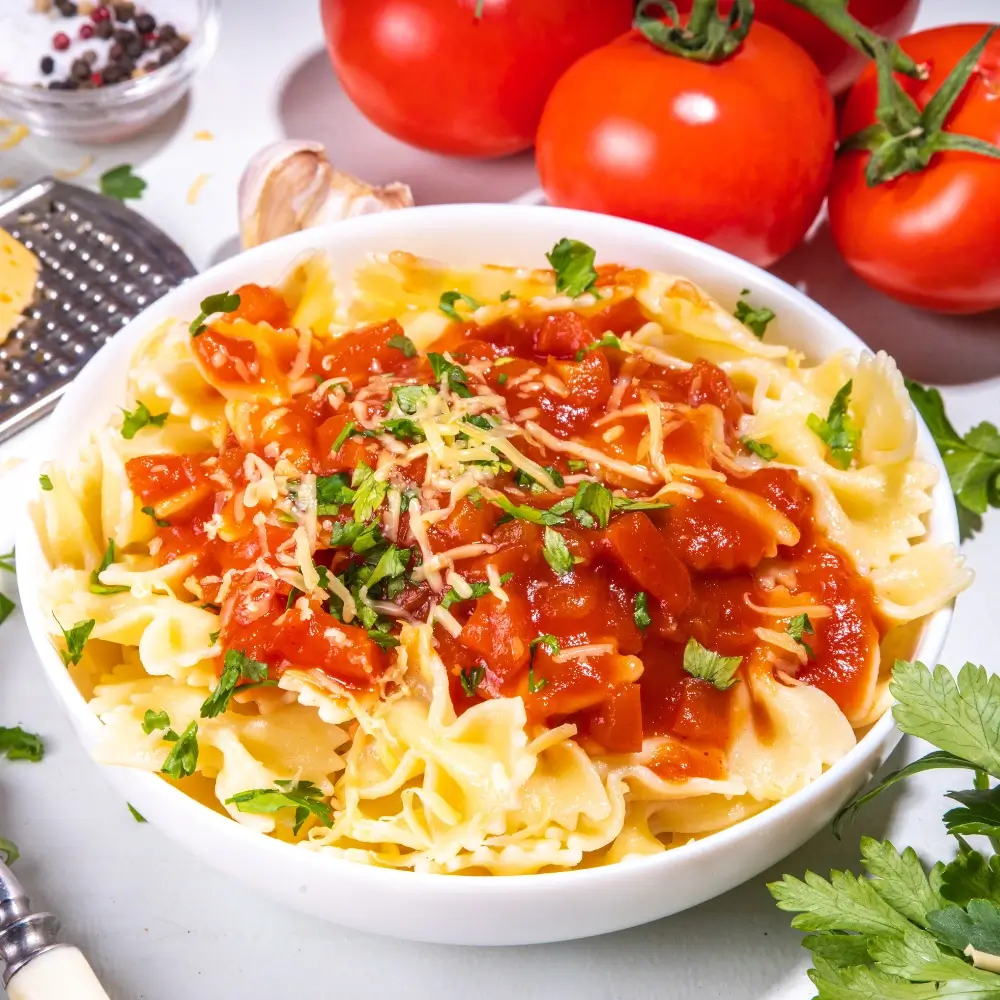
Regional Variations
Marinara sauce has many variations around the world. Rao’s marinara sauce is a well-known version in the United States. It’s made with top-notch ingredients and spices, giving it a unique taste.
In the U.S., marinara sauce is often sweeter and thicker. In Italy, different regions have their own marinara sauce styles. For example, Naples is famous for its bold and tangy sauce, made with fresh tomatoes, garlic, and herbs.
American Adaptations
- Rao’s marinara sauce is a favorite in America for its rich and slightly sweet taste.
- Some American versions might include onions, bell peppers, or mushrooms for a heartier flavor.
Italian Regional Differences
In Italy, marinara sauce varies a lot by region. The north has a lighter, more delicate sauce. The south, like Naples, is known for its bold flavor. Rao’s marinara sauce, while not traditional, is a favorite in many American-Italian homes.
| Region | Characteristics |
|---|---|
| Naples, Italy | Bold, tangy, made with fresh tomatoes and herbs |
| Northern Italy | Lighter, more delicate, may feature added cream or butter |
| United States (Rao’s marinara sauce) | Rich, slightly sweet, made with high-quality ingredients and a special blend of spices |
Storing and Preserving Your Sauce
Perfecting your homemade marinara sauce is a big deal. It’s important to store and preserve it right to keep its taste and texture. Whether you’re using it now or saving it for later, storing it well is key. You can enjoy your sauce longer by following a few simple steps.
To keep your sauce fresh, refrigerate it for up to a week. You can also freeze it for up to six months. For even longer storage, consider canning. Here are some tips for each method:
Refrigeration Guidelines
- Store the sauce in an airtight container.
- Keep it in the refrigerator at a temperature of 40°F (4°C) or below.
- Use the sauce within one week for optimal flavor and texture.
Freezing Methods
- Divide the sauce into smaller portions to freeze.
- Use airtight containers or freezer bags to prevent freezer burn.
- Label and date the containers or bags for easy identification.
Canning Instructions
| Method | Description |
|---|---|
| Water Bath Canning | This method involves submerging the jars in boiling water to create a vacuum seal. |
| Pressure Canning | This method uses high pressure to kill off bacteria and create a sterile environment. |
By using these storage and preservation methods, you can enjoy your homemade marinara sauce for a longer time. It will stay flavorful and textured. This way, you can always have a taste of your homemade sauce whenever you want.
Serving Suggestions and Pairings
Now that you’ve made your marinara sauce, it’s time to think about how to serve it. This sauce is great with many dishes, like pasta, pizza, and more. You can dip breadsticks or veggies in it, or use it with your favorite pasta.
Here are some ideas for using marinara sauce:
- Pasta: spaghetti, linguine, or penne are all great options
- Pizza: use marinara sauce as the base for your favorite toppings
- Meatballs or sausages: serve with marinara sauce for a hearty and flavorful meal
- Vegetables: use marinara sauce as a dipping sauce for grilled or roasted vegetables
Marinara sauce can be used in many ways. Try it with seafood like shrimp or scallops. The fun part is finding what you like best. With homemade sauce, you can make many tasty meals that everyone will enjoy.
Exploring marinara sauce is all about having fun and being creative. Don’t hesitate to try new things. Remember, the secret to a great meal is using quality ingredients and cooking with love, whether it’s store-bought or homemade.
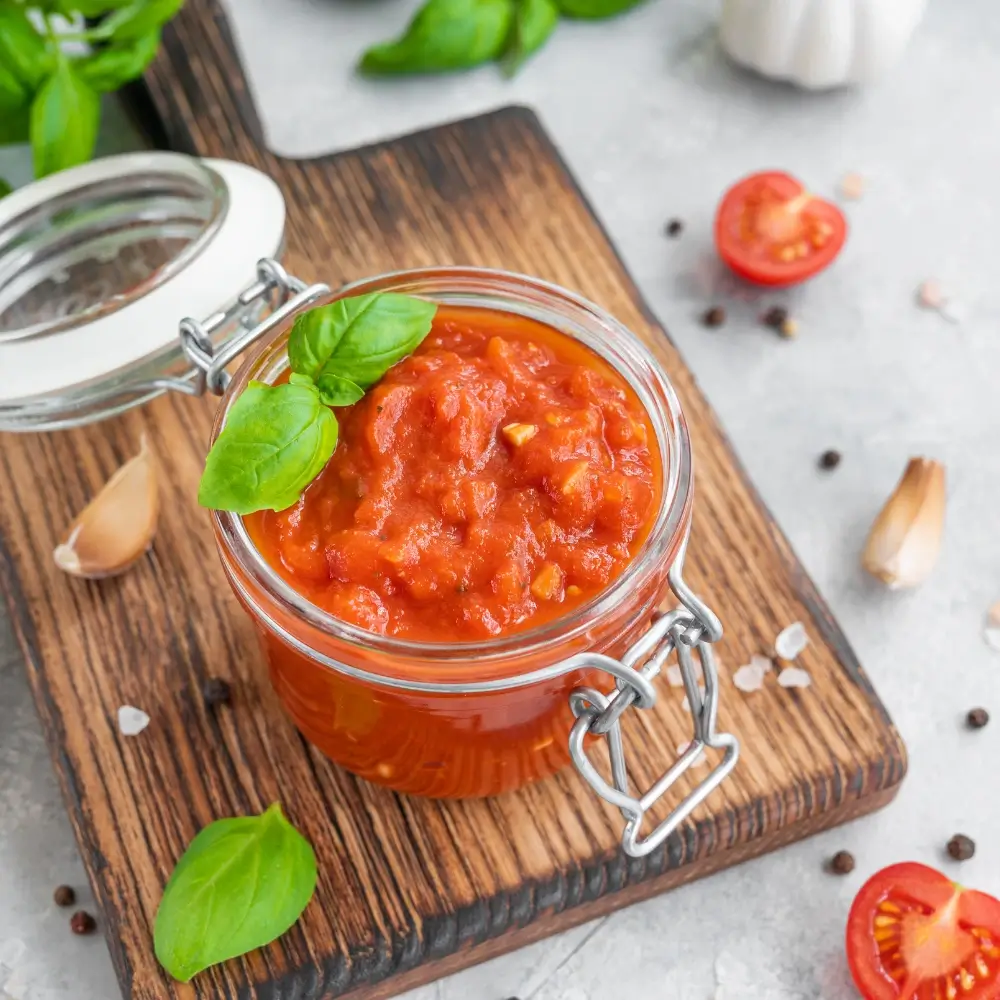
Troubleshooting Your Recipe
When making homemade marinara sauce, you might run into some problems. These can affect the sauce’s texture or taste. It’s important to know how to fix these issues to get the sauce just right.
Some common problems include a sauce that’s too thick or too thin. To solve these, you can adjust the liquid in the sauce or simmer it longer. For example, adding water or broth can thin out a thick sauce. Simmering a thin sauce longer can thicken it.
Fixing Texture Issues
- Adjust the amount of liquid in the sauce
- Simmer the sauce for a longer period to reduce the liquid
- Add a thickening agent, such as tomato paste or cornstarch
Adjusting Seasoning Problems
Flavor issues with your marinara sauce can be fixed by adjusting the seasoning. You might need to add more salt, sugar, or herbs. A bit of lemon juice or vinegar can also help brighten the flavor.
By following these tips and using a good marinara sauce recipe, you can make a delicious sauce. It’s perfect for pasta, pizza, or other Italian dishes.
Conclusion
Making your own marinara sauce is a rewarding experience. It lets you customize flavors and enjoy the satisfaction of making something delicious from scratch. With the right ingredients and practice, you can make a homemade marinara sauce as good as store-bought ones.
Remember, the secret to a great marinara sauce is balance and simplicity. Feel free to try new ingredients and adjust the seasoning. Over time, you’ll create your own unique homemade marinara sauce recipe.
Whether you’re an experienced cook or just starting, making your own marinara sauce adds excitement to your meals. It’s a great way to explore Italian cuisine. So, give it a try and enjoy making your own delicious homemade marinara sauce.
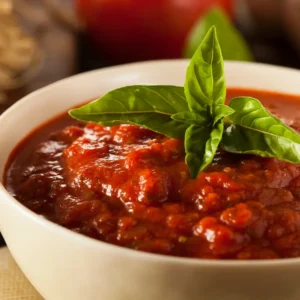
Marinara Sauce
Ingredients
- 1 tablespoon olive oil
- ½ onion, finely chopped
- 3 garlic cloves, minced
- 1 (28 oz) can crushed tomatoes
- 1 teaspoon dried oregano
- ½ teaspoon dried basil
- ¼ teaspoon red pepper flakes (optional)
- 1 teaspoon sugar (optional)
- Salt and black pepper to taste
- Fresh basil, chopped (for garnish, optional)
Instructions
- Heat olive oil in a medium saucepan over medium heat. Add the chopped onion and cook for 3-4 minutes, until softened.
- Add the minced garlic and cook for another 30 seconds, stirring constantly.
- Pour in the crushed tomatoes, dried oregano, dried basil, and red pepper flakes (if using). Stir to combine.
- Bring the sauce to a simmer, reduce the heat, and let it cook for 20-25 minutes, stirring occasionally.
- Taste and adjust seasoning with salt, pepper, and sugar, if desired.
- Serve immediately over pasta, pizza, or as a dip. Garnish with fresh basil if desired. Enjoy your Homemade Marinara Sauce.
FAQ:
Is marinara sauce halal?
A Marinara Sauce is generally halal if it contains only tomatoes, garlic, onions, herbs, and olive oil. Always check labels to ensure no alcohol or non-halal ingredients are used.
What can I use marinara sauce for?
A Marinara Sauce is perfect for pasta, dipping breadsticks, as a pizza base, or as a topping for grilled vegetables and seafood dishes.
Does marinara sauce have parmesan?
Traditional Marinara Sauce does not include parmesan; it is made with simple ingredients like tomatoes, garlic, and herbs. Parmesan is sometimes added later as a topping.
Is marinara just pizza sauce?
While Marinara Sauce and pizza sauce share similar ingredients, marinara is typically thinner and cooked, while pizza sauce is often uncooked and thicker for spreading.
What is marinara made of?
A classic Marinara Sauce is made of tomatoes, garlic, onions, olive oil, basil, and oregano, creating a simple yet flavorful tomato-based sauce.
Can Muslims have alcohol in sauce?
For a Marinara Sauce to be halal, it should not contain alcohol, as consuming alcohol in any form is not permissible in Islam. Always check ingredient labels.
